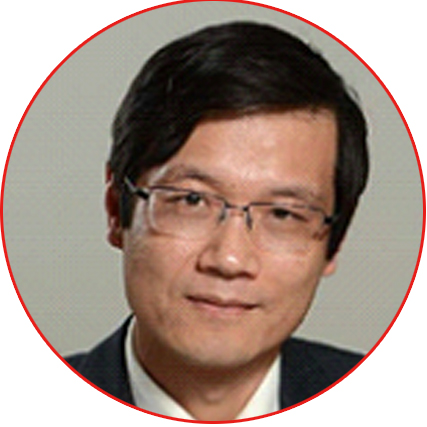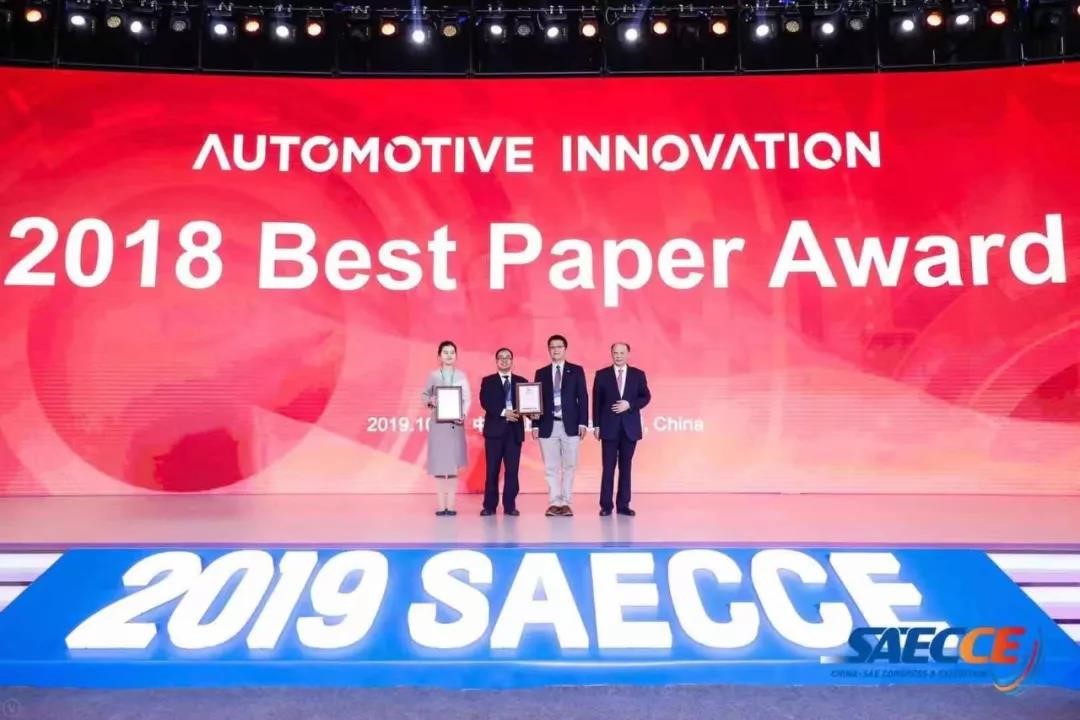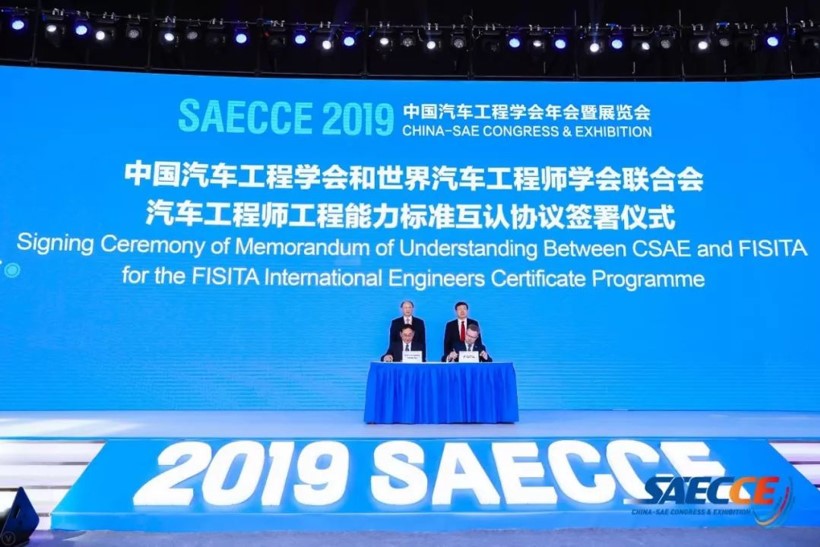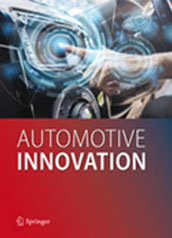

|
The journal Automotive Innovation is sponsored by China SAE, published through Springer, distributed around the world, and reflects the top-level research and technical advance of automotive engineering. Automotive Innovation newsletter in November includes the following contents: 1. A Glimpse of Experts——Prof. Hua Zhao from Brunel University 2. Article Recommendation——Four papers on battery, NVH, transmission control and transmission design of electric vehicles 3. China SAE News: · Two Papers Are Awarded as Automotive Innovation Best Paper 2018 |

 Prof. Hua Zhao Professor, Dept. of Mech & Aerospace Engineering, Brunel University |
Research Interests Engines, Fuels |
||
|
Achievements Pro. Hua Zhao, vice dean of College of Engineering, Design and Physical Sciences, leader of Advanced Powertrain and Fuels, Brunel University; chairman of Powertrain System and Fuels Group (PSFG) Board, IMechE. After graduating from Tianjin University, he studied in UK. In 1989, he finished his PhD. in Leeds University, and in 2009, he received DSc. in Brunel University. From 1989 to 1994, he worked as a research fellow at Cambridge University and Imperial College London. He has been working in Brunel University since 1994. For many tears, he has been engaged in the research of advanced engine and fuel. He has published over 350 papers in international journals and conferences, written 6 books, obtained 7 patents and completed research projects funded by the UK government, enterprises and the European Union. Under his supervision and guidance, over 40 doctoral students have graduated. Keen in promoting international technological exchanges and cooperation, he has given lectures in many universities and institutions in UK, many European countries, Japan, the United States, China and South Korea. Besides, he cooperates extensively within the industry circle. He is the Fellow of Society of Automotive Engineers (US). Moreover, he was granted the fellowship of Royal Academy of Engineering (UK) in 2015. |

   
|
Modeling and Simulating a Battery for an Electric Vehicle Based on Modelica Dongchen Qin · Jianjie Li · Tingting Wang · Dongming Zhang |
||
| Battery is the key technology to the development of electric vehicles, and most battery models are based on the electric vehicle simulation. In order to accurately study the performance of LiFePO4 batteries, an improved equivalent circuit model was established by analyzing the dynamic characteristics and contrasting different-order models of the battery. Compared to the traditional model, the impact of hysteresis voltage was considered, and the third-order resistance–capacitance (RC) network was introduced to better simulate internal battery polarization. The electromotive force, resistance, capacitance and other parameters were calibrated through battery charge and discharge experiments. This model was built by using Modelica, a modeling language for object-oriented multidomain physical systems. MWorks was used to implement the cycle conditions and vehicle simulation. The results show that the third-order RC battery model with hysteretic voltage well reflects the dynamics of a LiFePO4 battery. The difference between the simulated and measured voltages is small, with a maximum error of 1.78%, average error of 0.23%. The validity and feasibility of the model are verified. It can be used in unified modeling and simulation of subsequent multi-domain systems of electric vehicles. | |||
|
Keywords: Electric vehicle · LiFePO4 battery · Hysteresis · Equivalent circuit model · Modelica Qin, D., Li, J.J., Wang T.T., et al.: Modeling and simulating a battery for an electric vehicle based on modelica. Automot. Innova. 2(3): 169-177(2019) |
|||
| Full Paper Reading>> | |||
   
|
Numerical Implementation of High-Order Vold–Kalman Filter Using Python Arbitrary-Precision Arithmetic Library Linhe Ge · Fangwu Ma · Jinzhu Shi · Hongbin Yin · Ying Zhao |
||
| The Vold–Kalman order-tracking filter plays a vital role in the order analysis of noise in various fields. However, the limited accuracy of double-precision floating-point data type, which is only accurate to the fifteenth decimal place at most, means that the order of the filter cannot be too high. Thus, the passband of the frequency response of the filter will not be very flat, and so large deviations in the speed measurements will produce a greater deviation in the extraction of the order signal. This problem of accuracy makes it impossible for the filter to use a smaller bandwidth, meaning that the extracted order signal has greater noise. In this paper, the Python mpmath arbitrary-precision floating-point arithmetic library is used to implement a high-order Vold–Kalman filter. Based on this library, a filter with arbitrary bandwidth and arbitrary difference order can be implemented whenever necessary. Using the proposed algorithm, a narrower transition band and a flatter passband can be obtained, which means that when the sampling rate of the speed signal is far lower than that of the measured signal, a good filtering effect can still be obtained, and it is possible to extract narrow-band signals from signals with large bandwidth. Test cases adopted in this paper show that the proposed algorithm has better filtering effect, better frequency selectivity and stronger anti-interference ability compared with double-precision data type algorithm. | |||
|
Keywords: Noise order analysis · Vold–Kalman filter · Arbitrary-precision floating-point arithmetic Ge, L.H., Ma, F.W., Shi, J.Z., et al.: Numerical implementation of high-order Vold–Kalman filter using python arbitrary-precision arithmetic library. Automot. Innova. 2(3): 178-189(2019) |
|||
| Full Paper Reading>> | |||
   
|
Hardware Design and Test of a Gear‑Shifting Control System of a Multi‑gear Transmission for Electric Vehicles Feng Tian · Liqi Sui · Yuanfan Zeng · Bo Li · Xingyue Zhou · Lijun Wang · Hongxu Chen |
||
| The performance of electric vehicles is affected by the shift quality of multi-gear transmission. The realization of dual-target tracking control requires the transmission control unit (TCU) to accurately measure and process the input signals of the gear-shifting control system and precisely control the drive motor torque and the position of shift motors. An electric-vehicle-dedicated TCU was designed to meet the above design requirements. Its function modules included a single-chip control circuit, shift position signal sampling circuit, signal conditioning circuit of the rotational speed and angle, controller area network communication circuit, and shift motor drive circuit. A hardware-in-the-loop simulation test system showed that the TCU design scheme met measurement accuracy requirements and coordinated the actions of the shift actuator and motor control unit to achieve fast and smooth shifting before the road test. The power interruption time of the shifting process was within 350 ms. The reliability of the TCU design was further verified in an 150,000-km vehicle road test. | |||
|
Keywords: Electric vehicles · Transmission control unit · Multi-gear transmission · Dual-target tracking control · Hardware design · Gear-shifting control Tian, F., Sui, L.Q., Zeng, Y.F., et al.: Hardware design and test of a gear‑shifting control system of a multi‑gear transmission for electric vehicles. Automot. Innov. 2(3): 212-222(2019) |
|||
| Full Paper Reading>> | |||
   
|
Systematic Synthesis of Dedicated Hybrid Transmission Lin Li · Haijun Chen ·Ferit Küçükay |
||
| The great diversity of dedicated hybrid transmissions (DHTs) requires a method to identify solutions among all potential concepts involved in each structure. Therefore, a DHT synthesis tool is developed on the basis of general transmission synthesis. In the first synthesis step, transmission structures are generated with only conventional functions such as driving with only the internal combustion engine. Electric machines are then installed in the transmissions to achieve further hybrid functions, including boosting, eCVT and electric driving modes. The number of generated transmission concepts increases exponentially with each synthesis step. Various evaluations are carried out successively to identify the most suitable DHT concepts among the many possible solutions. The generated DHT concepts are evaluated in terms of structural feasibility, driving modes, drivability and load factors on transmission components. An example of DHT synthesis involving planetary gear sets is explained in detail. The best five DHT structures are identified out of more than 120 billion solutions. | |||
|
Keywords: Dedicated hybrid transmission · Transmission design · Synthesis · Structural evaluation Li, L., Chen, H.J., Küçükay, F.: Systematic synthesis of dedicated hybrid transmission. Automot. Innov. 2(3), 231-239 (2019) |
|||
| Full Paper Reading>> | |||

| Two Papers Are Awarded as Automotive Innovation Best Paper 2018 | |||
 Automotive Innovation Best Paper Award 2018 was organized and the award ceremony was held in Shanghai on October 24, 2019. After preliminary review by associate editors-in-chief, secondary review by nearly 30 international experts and final review by 3 editors-in-chief, 2 papers were selected as the Best Papers from 35 original papers published in Automotive Innovation in 2018. The first awarded paper is “CO2 Reduction Request and Future High-Efficiency Zero-Emission Argon Power Cycle Engine” by Liguang Li, Yinchun Gong, Jun Deng and Xuehai Gong from Tongji University. The second awarded paper is “Design of a Regenerative Auxiliary Power System for Service Vehicles” by Yanjun Huang, Milad Khazeraee, Hong Wang, Soheil M. Fard, Tianjun Zhu and Amir Khajepour. |
|||
| Intelligent Safety Conference 2020 Is Calling for Abstract | |||
 FISITA Intelligent Safety Conference China will return to CICV 2020 in Beijing for a full-day event in May 2020. Intelligent Safety Conference 2020 is calling for abstract. SAE has hosted the inaugural FISITA Intelligent Safety Conference on 29 May 2019, during the 6th International Congress of Intelligent and Connected Vehicles Technology, in Beijing, China. This unique opportunity enabled delegates to participate as FISITA and China SAE collaborated in establishing and delivering this important conference at a crucial time for the international automotive and mobility systems engineering community. This event delivered a high-quality, international speaker line-up, which considered and discussed the important topics of the safety of future mobility such as standards, regulation, design safety, test and evaluation, making this one of the important, must-attend events of 2019. Abstracts are invited on any of the following topics: ·Safety Analysis, Test and Evaluation for Automated Driving ·Standards and Regulations for Automotive Intelligent Safety ·Safe Architecture Designing for Automated Vehicles (Software and Hardware Architecture) A selection of speakers will be drawn from the abstract submissions and invited to present their work at the FISITA Intelligent Safety Conference China at ISC 2020. The abstract deadline is 15 January 2020. To submit your abstract, please visit www.fisita.com/isc |
|||
| Memorandum of Understanding Between China SAE and FISITA for the FISITA International Engineers Certificate Programme Is Signed | |||
 On October 22, China SAE and FISITA signed the Memorandum of Understanding of the FISITA International Engineers Certificate Programme in Shanghai. The launch of this programme demonstrates that the engineering capability as well as the capability evaluation system of Chinese automotive engineers have been recognized by the world. Through FISITA's global platform, a cross-national, cross-regional and cross-cultural engineers certificate is therefore realized, guaranteeing talents to promote innovation in the global automotive industry. This plays a crucial role in realizing the globalization of human resources management. |
|||

|
Automotive Innovation Automotive Innovation is the first English journal in China's automotive industry. Founded in 2018, sponsored by China SAE and published via Springer, Automotive Innovation has a very special significance in China's automotive academia. Since its foundation, world-renowned automotive experts with high H index have been invited to join the editorial board, and the strict standards of SCI Journals are meticulously followed to ensure the high quality of papers and publication. By now, seven issues have been published successfully with readers in 72 countries and regions. Many famous professors have already published articles in it, such as Prof. Liguang Li, Prof. Shijin Shuai, Prof. Ferit Küçükay, Prof. Xiangyang Xu, Prof. Amir Khajepour and so on. The journal has been recognized by FISITA, other international organizations and some well-known universities. Editors-in-Chief Jun Li, Academician of CAE, President of China SAE, Professor of Tsinghua University Frank Zhao, President (2018-2020) of FISITA, President of Tsinghua Automotive Strategy Research Institute Executive Editor-in-Chief Prof. Mike Ma,Executive Chief Editor of Automotive Innovation, Professor of Jilin University, VP Technical FISITA |
||||
|
Paper submission and browse www.ChinaSAEJournal.com.cn www.springer.com/42154 Contacts: Ms. Huisi, Gu Tel: +86-10-50950101 Email: ghs@sae-china.org |

|
|||
|
Sponsored by |
Published by
|
|||